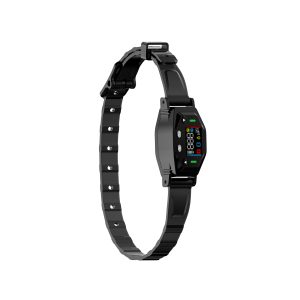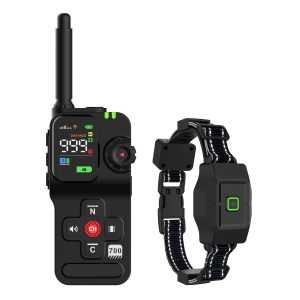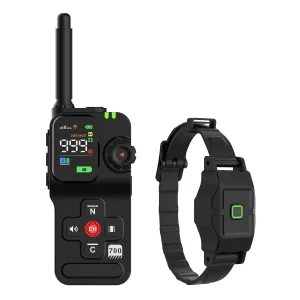Wireless Dog Fence Buying Guide: A Complete Guide to Choosing the Right System for Your Pet
As a pet owner, one of the biggest concerns is ensuring your dog’s safety while allowing them the freedom to roam. Traditional fences, while effective, can be costly, difficult to install, and often unsightly. This is where wireless dog fences come in, offering a flexible, easy-to-install, and invisible alternative to traditional fencing.
Wireless dog fences are gaining popularity because of their convenience and ability to keep pets safe within a designated area. But with so many options available in the market, choosing the right wireless dog fence for your pet and property can be overwhelming. This buying guide will help you make an informed decision by exploring key factors to consider when selecting a wireless dog fence system, as well as our top recommendations.
What is a Wireless Dog Fence?
Before diving into the specifics of what to look for in a wireless dog fence, let’s first understand how these systems work. A wireless dog fence is an electronic pet containment system that uses a transmitter and a receiver collar to create an invisible boundary around your property.
-
Transmitter: The transmitter is usually placed inside your home and emits a signal that defines the boundary of your pet’s play area. The range can often be adjusted depending on the size of your yard.
-
Receiver Collar: Your dog wears a collar with a receiver that detects the signal from the transmitter. If your dog moves too close to the boundary, the collar will emit a warning sound followed by a mild corrective stimulus such as a vibration, beep, or static shock to encourage them to stay within the designated area.
Key Factors to Consider When Buying a Wireless Dog Fence
When selecting a wireless dog fence, there are several factors to consider to ensure that the system is both effective and suitable for your pet and property.
1. Coverage Area
One of the first factors to consider is the coverage area that the system can provide. Wireless dog fences typically create a circular boundary, and the size of that circle will vary based on the transmitter’s range.
-
Small to Medium Yards: Most wireless systems cover a range between 0.5 to 5 acres, which should be sufficient for smaller to medium-sized yards.
-
Larger Yards: If you have a larger property, you’ll need a system that can cover more ground. Some high-end systems offer coverage for up to 25 acres or more, which is ideal for larger homes or estates.
When purchasing a wireless dog fence, check the maximum radius or acreage covered to ensure it meets your needs. You should also consider how customizable the boundary is. Some systems allow for more flexibility and customization, letting you adjust the shape of the boundary to fit your yard’s layout.
2. Training Mode and Ease of Use
Wireless dog fences rely heavily on training to ensure that your dog stays within the designated boundary. A good system should have a training mode that helps gradually introduce your pet to the invisible fence. Most systems will offer a gradual progression from audible warnings to mild corrections.
-
Beep-Only Mode: Some systems feature a beep-only mode that alerts your dog as they approach the boundary.
-
Progressive Correction: More advanced systems allow for a progressive correction that starts with a beep, followed by a light vibration or shock if the dog doesn’t retreat.
An easy-to-understand, user-friendly training process will help ensure that your dog learns to respect the boundary without being frightened or confused. Check for systems that provide clear instructions and easy-to-implement training guidelines.
3. Collar Features
The receiver collar plays a crucial role in the system’s effectiveness, so it’s important to consider the features of the collar. The collar should be comfortable, durable, and adjustable to fit your dog’s size.
-
Comfort: Look for collars made of lightweight, adjustable, and comfortable materials. The collar should be suitable for your dog’s neck size without being too tight or too loose.
-
Durability: Choose a collar that is water-resistant or fully waterproof. Since your dog may get wet or play outside in various weather conditions, having a waterproof collar is essential for longevity.
-
Correction Levels: Different systems offer different levels of correction. It’s important to select a collar with multiple levels (from mild beeping to stronger static shock) so that you can adjust the intensity based on your dog’s temperament.
Some collars come with additional features, like vibration-only options for dogs that are sensitive to shocks, and low battery indicators to ensure the system always works.
4. System Flexibility and Customization
Not all properties are shaped the same, and your wireless dog fence should be adaptable to your specific needs. Most wireless fences create a circular boundary, but if you have an irregularly shaped yard, you may want to consider a system with customizable boundary shapes or expandable systems that can work in multiple zones.
-
Expandable Systems: If you want to extend the boundary to multiple areas or have multiple pets, look for a system that can support multiple collars or that allows for multi-zone configurations. This ensures that your pet stays safe no matter where they roam.
-
Adjustable Boundaries: Some systems allow you to adjust the shape of the boundary, which is useful if you have a yard with hills, obstacles, or non-circular layout.
5. Battery Life
Battery life is an important factor when selecting a wireless dog fence. A collar with a long battery life will save you the hassle of constantly recharging or replacing batteries. Look for systems with long-lasting rechargeable batteries to reduce maintenance.
-
Rechargeable vs. Disposable Batteries: Many wireless dog fences use rechargeable batteries, which are more environmentally friendly and cost-effective in the long run. Some systems still use disposable batteries, so consider this depending on how often you are willing to change the batteries.
6. Safety Features
The safety of your pet is paramount, and choosing a system that prioritizes your dog’s comfort and well-being is crucial. Some important safety features to look for include:
-
Automatic Shutoff: Some systems will automatically turn off after a set amount of time to prevent your dog from being exposed to continuous corrections.
-
Warning Zones: Many systems include warning zones that signal when your dog is getting close to the boundary, so they have the opportunity to retreat before receiving any correction.
-
Adjustable Correction Strength: Adjustable correction levels will allow you to tailor the intensity of the correction based on your dog’s sensitivity.
7. Price and Warranty
Finally, consider the price and warranty. Wireless dog fences come in a range of price points, with higher-end systems typically offering more features and better durability.
-
Warranty: A solid warranty can give you peace of mind that you’re investing in a system that’s built to last. Look for a warranty that covers defects and has a reasonable return or replacement policy.
-
Price Range: You can expect to pay anywhere from $100 to $500 for a wireless dog fence, depending on the features, range, and brand.
Top Recommendations for Wireless Dog Fences
Here are a few top-rated wireless dog fences to consider:
-
PetHey Wireless Dog Fence
-
Coverage: Up to 1/2 acre
-
Features: Adjustable boundary, waterproof collar, easy setup
-
Price: $150-$200
-
-
Stay & Play Brand In-Ground Fence System
-
Coverage: Up to 100 acres with additional wire
-
Features: Waterproof collar, 4 adjustable levels of static correction
-
Price: $200-$300
-
-
Wellturn Wireless Dog Fence
-
Coverage: Up to 3/4 acre
-
Features: Rechargeable collar, adjustable correction levels, suitable for small to medium-sized dogs
-
Price: $250-$350
-
-
WIEZ Wireless Dog Fence
-
Coverage: Up to 1 acre
-
Features: 3 adjustable training modes, waterproof collar, rechargeable battery
-
Price: $120-$160
-
Conclusion
Choosing the right wireless dog fence can make all the difference in keeping your pet safe while giving them the freedom to roam. By considering factors like coverage area, collar features, training mode, and safety features, you can find a system that fits both your dog’s needs and your property’s layout.
While wireless dog fences are convenient and flexible, it’s important to choose one that offers customization options, durability, and effective training tools. By investing in a high-quality wireless fence, you’ll ensure that your dog stays safe and happy, and your yard remains free from the constraints of traditional fencing.




